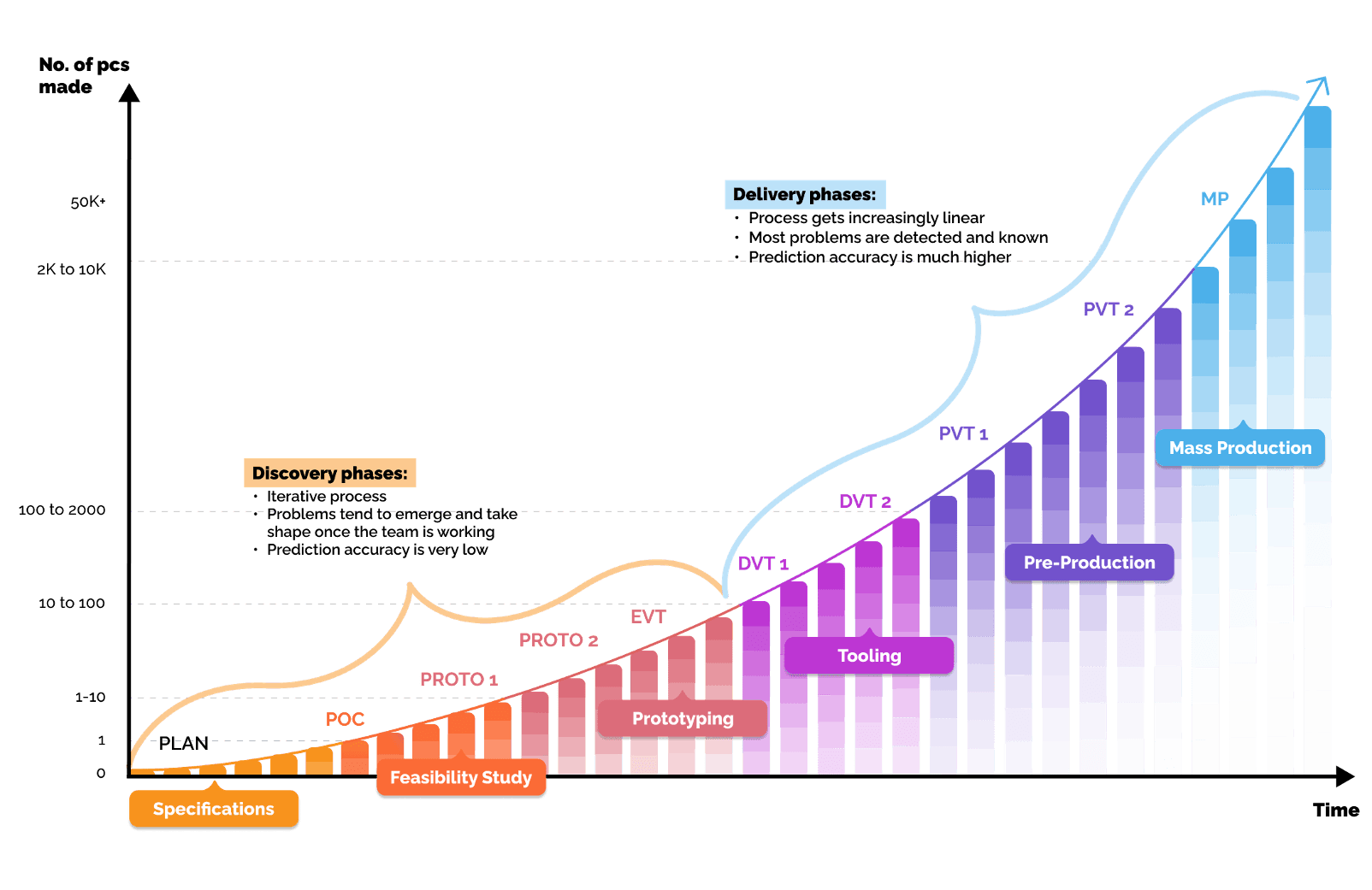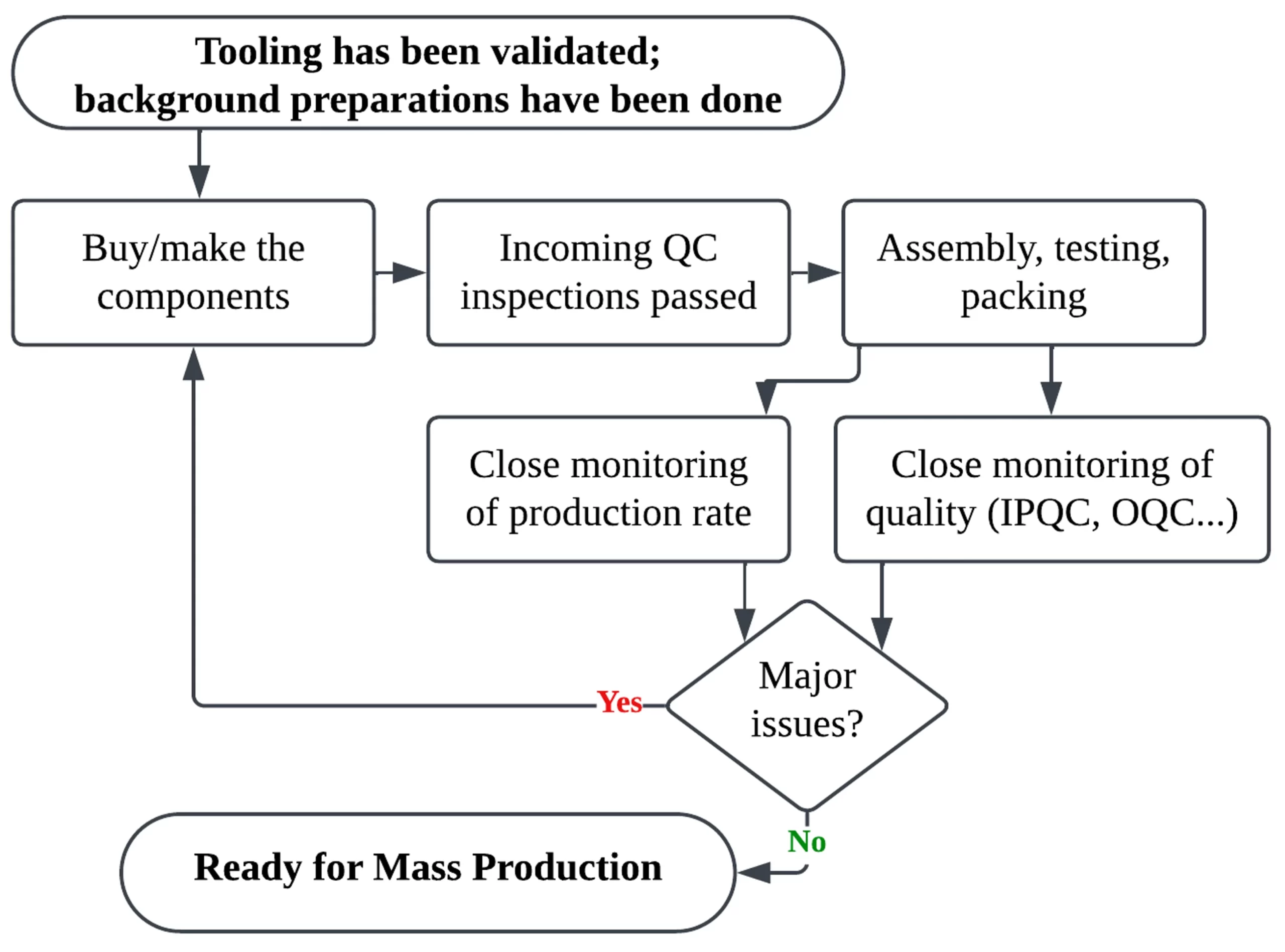When bringing a new product into production, it is critical to identify and resolve issues early, without putting a lot of material right. That’s why pre-production pilot runs are such an important tool.
But there is a common misconception. We are not talking about just one pilot run. Let’s look into why conducting several pilot runs during the pre-production phase often makes a lot of sense, with the goal of minimizing risks.
When is the pre-production stage?
At Agilian, we work in a specific way on customer projects to get through product development into mass production with fewer risks, which is to follow our proven 6-phase new product introduction process.
As you can see from this graphical representation, the pre-production phase of your project sits squarely within the overarching ‘delivery’ phase where the production process is refined, problems are surfaced and fixed, and the product gets closer to the high-volume production phase.

Pre-production’s objectives
The objective of the pre-production phase is to reduce risks of quality issues, delays, capacity constraints, and in general cost overruns for the mass production phase.
Validating that everything is ready for production is a critical feature of this stage and the pilot run/s take place in the ‘assembly, testing, and packing’ part of the following process flow:

This phase may delay the start of production a little, but it often highlights serious issues that, in some cases, couldn’t be identified previously.
To let you know what we do during this phase, it typically includes the following tasks, among others:
- Refine assembly process and related work instructions
- Refine the quality plan (Incoming QC, Outgoing QC, In-Process QC…) and the quality targets
- Make tooling and jigs for assembly and/or quality control
- Run the “pilot runs” which are small production batches (often 40 to 100 pcs)
- Conduct a pre-production review on processes, tooling, materials, etc.
How many pilot runs are needed?
As mentioned, a pilot run is a small-scale production trial typically involving 40 to 100 pieces of your product using the final production processes and parts.
While it might be tempting to conduct just one pilot run (as it’s faster and cheaper, and you may be under pressure from your manufacturer to do so), this approach can leave significant risks unaddressed.
One pilot run does not show batch-to-batch variation
Doing only one pilot run is better than none, we can all agree on that! However, this graph that shows how much parts’ tolerances can vary between batches demonstrates that doing one ‘successful’ pilot run and congratulating oneself for a job well done, then starting mass production straight away could be a mistake:

(This graph could represent the variation in any critical-to-quality value, from the dimension of a molded part to the viscosity of a batch of paint.)
Several pilot runs offer a clearer picture and can help to reduce risks best
In an ideal world, what should we be looking for? Enough sets of results to have the full picture of how production will perform. Here you can see results from several batches.

If you rely on an unstable process (either in-house or at a supplier’s factory), is that likely to have a serious impact on product quality & reliability? Will it make assembly difficult and slower? Those are sometimes very serious risks.

Each pilot run provides an opportunity to gather data. If some critical-to-quality values display excessive variation in some batches, action needs to be taken. Tracking the capability index of that value, driving improvements, confirming effectiveness, and so on.
Key takeaways
Conducting several pilot runs before mass production is not just a recommended practice—for relatively large projects, in our opinion, it’s a necessity for minimizing risks, controlling costs, and ensuring product success. Large companies in the electronics industry have learned the hard way and have been doing that for decades.
Ready to discuss your next manufacturing project? Contact us today to discuss how we can help you succeed.
P.S. Read these related articles about pilot runs
We’ve already written about pilot runs in several blog posts, take a look.



